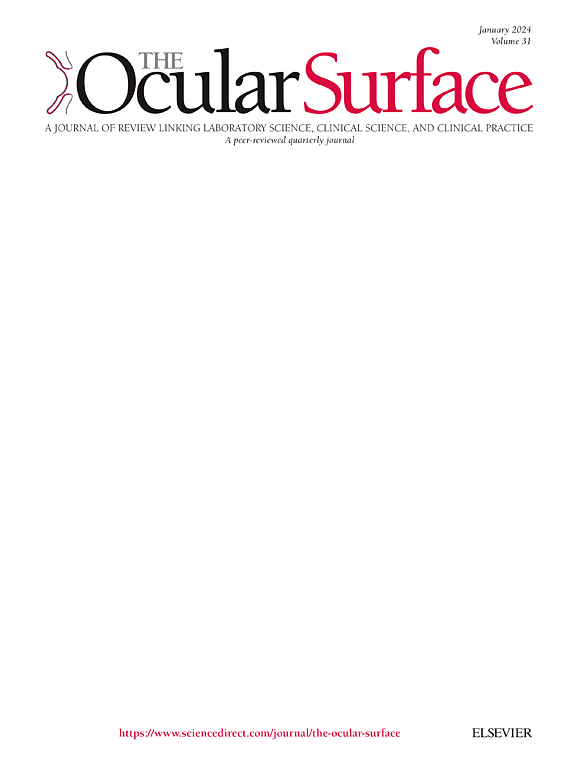史蒂文斯-约翰逊综合征/中毒性表皮坏死松解症的因果关系归因
IF 5.6
1区 医学
Q1 OPHTHALMOLOGY
引用次数: 0
摘要
史蒂文斯-约翰逊综合征/中毒性表皮坏死松解症(SJS/TEN)是一种急性、严重的皮肤和粘膜免疫大泡性疾病,最常由药物暴露引起。SJS/TEN的病因通常由“表皮坏死松解药物因果关系算法”(ALDEN)工具确定。然而,人们仍然关注ALDEN的准确性和因果关系评估工具,这可能会影响正在进行的试图将特定基因型与特定药物类别作为病因联系起来的研究。为了确定在SJS/TEN的因果归因中是否存在谨慎标准,我们对SJS/TEN的因果关系的当前概念以及用于归因的现有临床和实验室评估工具进行了叙述性回顾。我们发现目前的SJS/TEN因果归因工具,包括ALDEN,在某种程度上受到潜在假设的限制。用于确定SJS/TEN病因的离体试验,特别是淋巴细胞转化试验和细胞因子刺激试验,仍在研究中,要么不适用于急性SJS/TEN,要么尚未得到验证。总之,在SJS/TEN患者的护理中存在一个关键的未满足需求,即难以确定任何特定个体的确切病因。这一缺陷限制了临床医生在急性期仅停用致病因子的能力,混淆了发病机制的研究,并使受影响的患者处于慢性期,而不知道将来使用哪种药物或药物类别是安全的。需要进一步的研究来缩小这一毁灭性疾病护理方面的这一重大差距。本文章由计算机程序翻译,如有差异,请以英文原文为准。
Attribution of causality in Stevens-Johnson syndrome/toxic epidermal necrolysis
Stevens-Johnson syndrome/toxic epidermal necrolysis (SJS/TEN) is an acute, severe immunobullous disorder of skin and mucous membranes that is most commonly induced by exposure to drugs. Causation of SJS/TEN is most often determined by the “algorithm of drug causality for epidermal necrolysis” (ALDEN) tool. However, concerns remain regarding the precision of ALDEN and causality assessment tools, potentially impacting ongoing studies attempting to link specific genotypes with specific drug classes as causes. To determine whether a standard of care exists in attribution of causation in SJS/TEN, we performed a narrative review of current concepts on causation in SJS/TEN, and available clinical and laboratory assessment tools for attributing causation. We found that current SJS/TEN causality attribution tools, including ALDEN, are somewhat limited by underlying assumptions. The utility of ex vivo tests proposed for determining causation in SJS/TEN, specifically the lymphocyte transformation test and cytokine stimulation assays, remain under investigation and are either not tractable for acute SJS/TEN or are not yet validated. In summary, a critical unmet need exists in the care of SJS/TEN patients, namely the difficulty in determining a precise cause in any specific individual. This shortfall limits the clinician's ability to discontinue only the causal agent in the acute phase, confounds studies of pathogenesis, and leaves affected patients in the chronic phase without knowing which drug or drug class is safe to use in the future. Further studies are needed to close this critical gap in the care of this devastating disease.
求助全文
通过发布文献求助,成功后即可免费获取论文全文。
去求助
来源期刊

Ocular Surface
医学-眼科学
CiteScore
11.60
自引率
14.10%
发文量
97
审稿时长
39 days
期刊介绍:
The Ocular Surface, a quarterly, a peer-reviewed journal, is an authoritative resource that integrates and interprets major findings in diverse fields related to the ocular surface, including ophthalmology, optometry, genetics, molecular biology, pharmacology, immunology, infectious disease, and epidemiology. Its critical review articles cover the most current knowledge on medical and surgical management of ocular surface pathology, new understandings of ocular surface physiology, the meaning of recent discoveries on how the ocular surface responds to injury and disease, and updates on drug and device development. The journal also publishes select original research reports and articles describing cutting-edge techniques and technology in the field.
Benefits to authors
We also provide many author benefits, such as free PDFs, a liberal copyright policy, special discounts on Elsevier publications and much more. Please click here for more information on our author services.
Please see our Guide for Authors for information on article submission. If you require any further information or help, please visit our Support Center
 求助内容:
求助内容: 应助结果提醒方式:
应助结果提醒方式:


